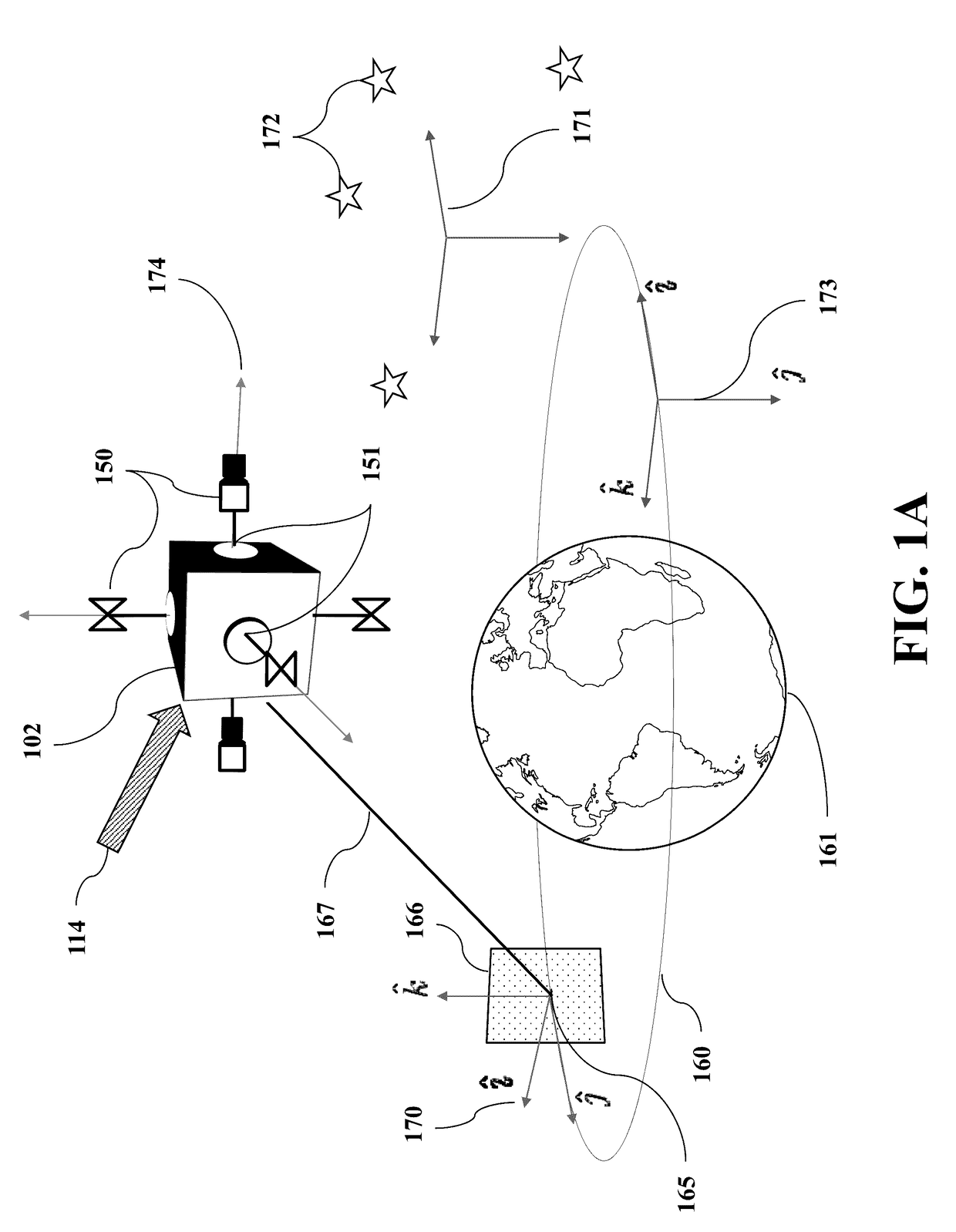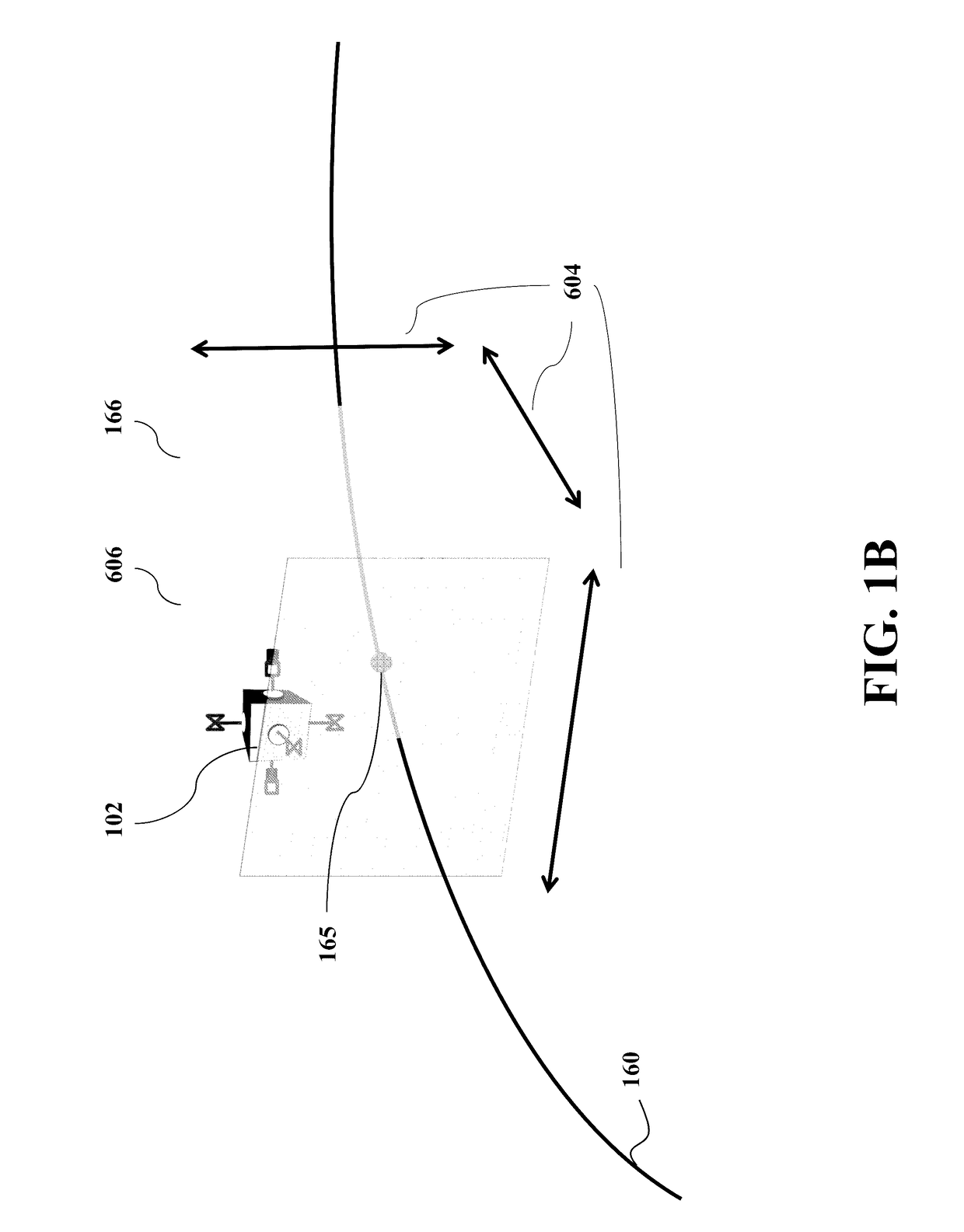Model Predictive Control of Spacecraft
a spacecraft and model technology, applied in the direction of vehicle position/course/altitude control, process and machine control, instruments, etc., can solve the problems of imposing constraints and the optimization of that cost function can be subject to constraints, and achieve tighter and more accurate station keeping and momentum unloading
- Summary
- Abstract
- Description
- Claims
- Application Information
AI Technical Summary
Benefits of technology
Problems solved by technology
Method used
Image
Examples
Embodiment Construction
[0021]FIGS. 1A and 1B show a spacecraft 102 equipped with a plurality of actuators such as thrusters 150 and momentum exchange devices 151. Examples of the type of actuators include reaction wheels (RWs), and control moment gyroscopes (CMGs). The spacecraft is a vehicle, vessel, or machine designed to fly in outer space whose operation changes quantities such as the position of the spacecraft, its velocities, and its attitude or orientation, in response to commands that are sent to the actuators. When commanded, the actuators impart forces on the spacecraft that increase or decrease the velocity of the spacecraft and thus cause the spacecraft to translate its position, and, when commanded, the actuators also impart torques on the spacecraft, which cause the spacecraft to rotate and thereby change its attitude or orientation. As used herein, the operation of the spacecraft is determined by the operation of the actuators that determine a motion of the spacecraft that changes such quan...
PUM
 Login to View More
Login to View More Abstract
Description
Claims
Application Information
 Login to View More
Login to View More - R&D
- Intellectual Property
- Life Sciences
- Materials
- Tech Scout
- Unparalleled Data Quality
- Higher Quality Content
- 60% Fewer Hallucinations
Browse by: Latest US Patents, China's latest patents, Technical Efficacy Thesaurus, Application Domain, Technology Topic, Popular Technical Reports.
© 2025 PatSnap. All rights reserved.Legal|Privacy policy|Modern Slavery Act Transparency Statement|Sitemap|About US| Contact US: help@patsnap.com



